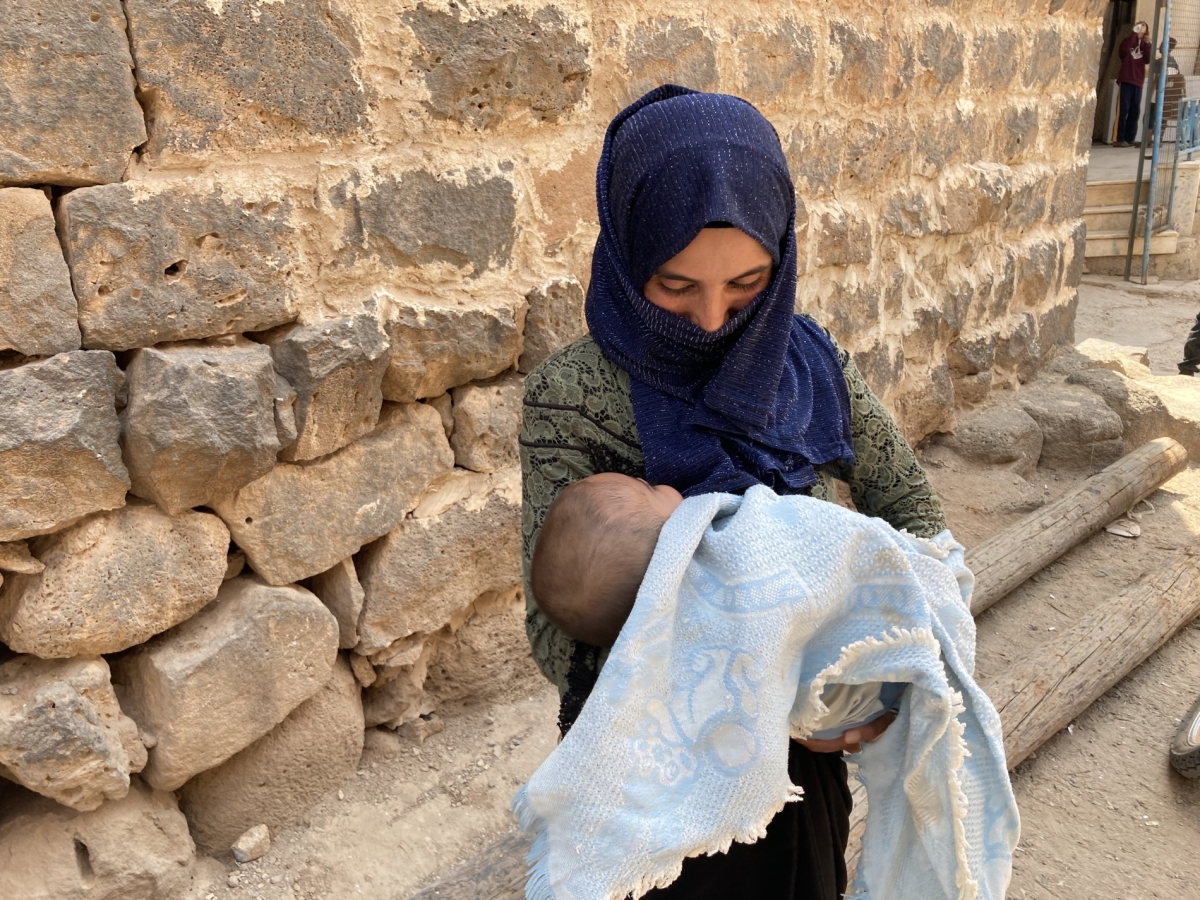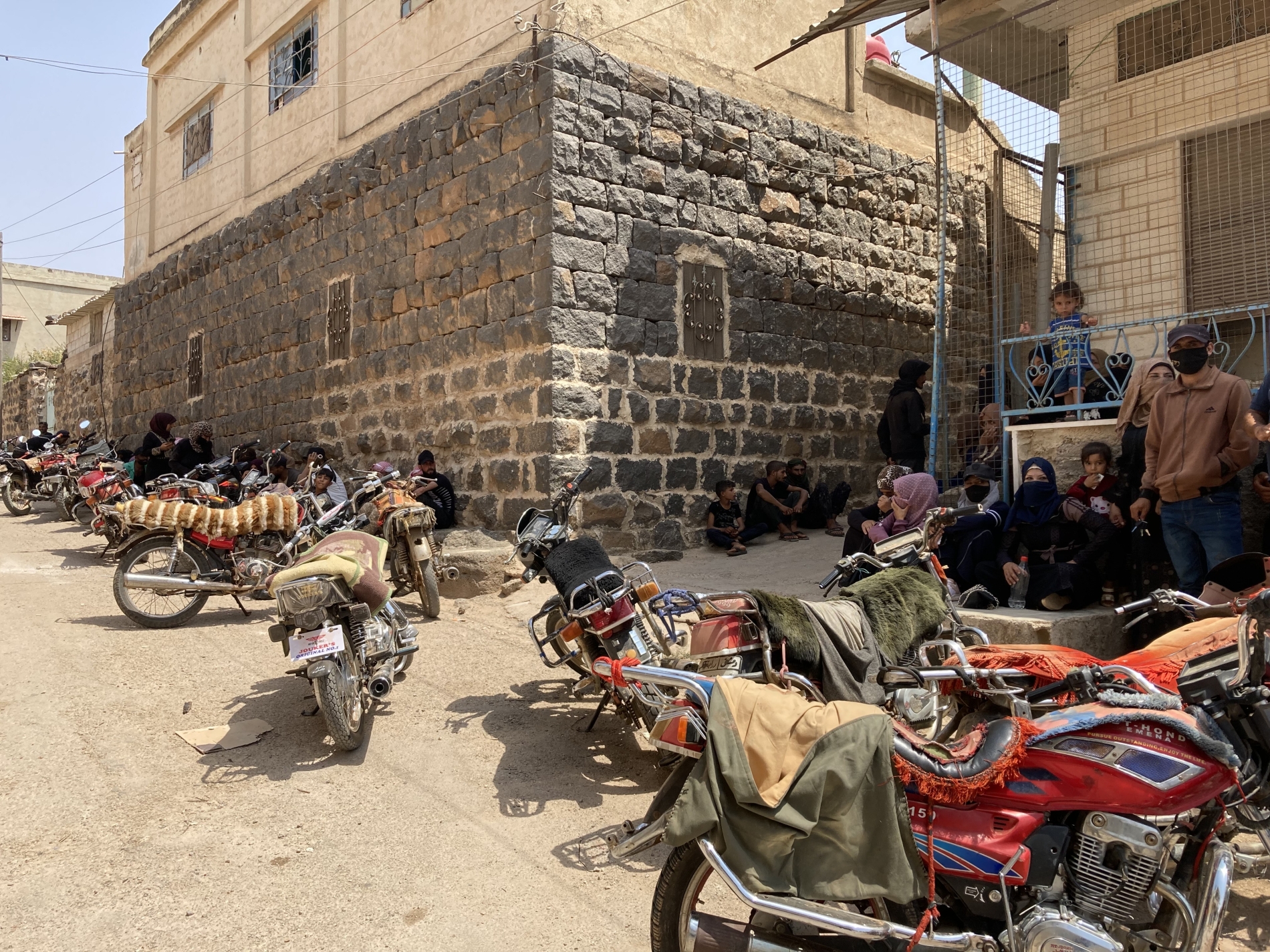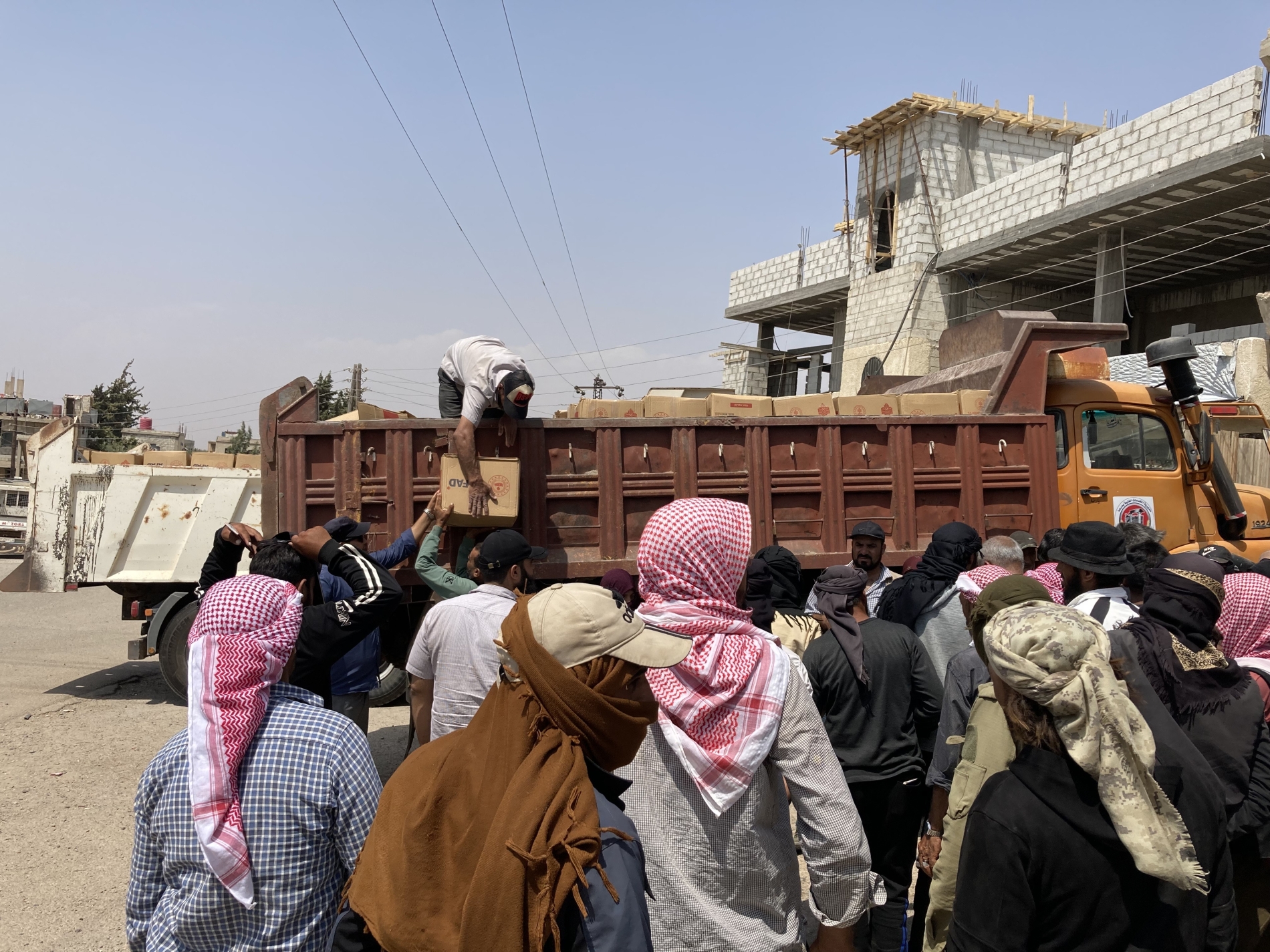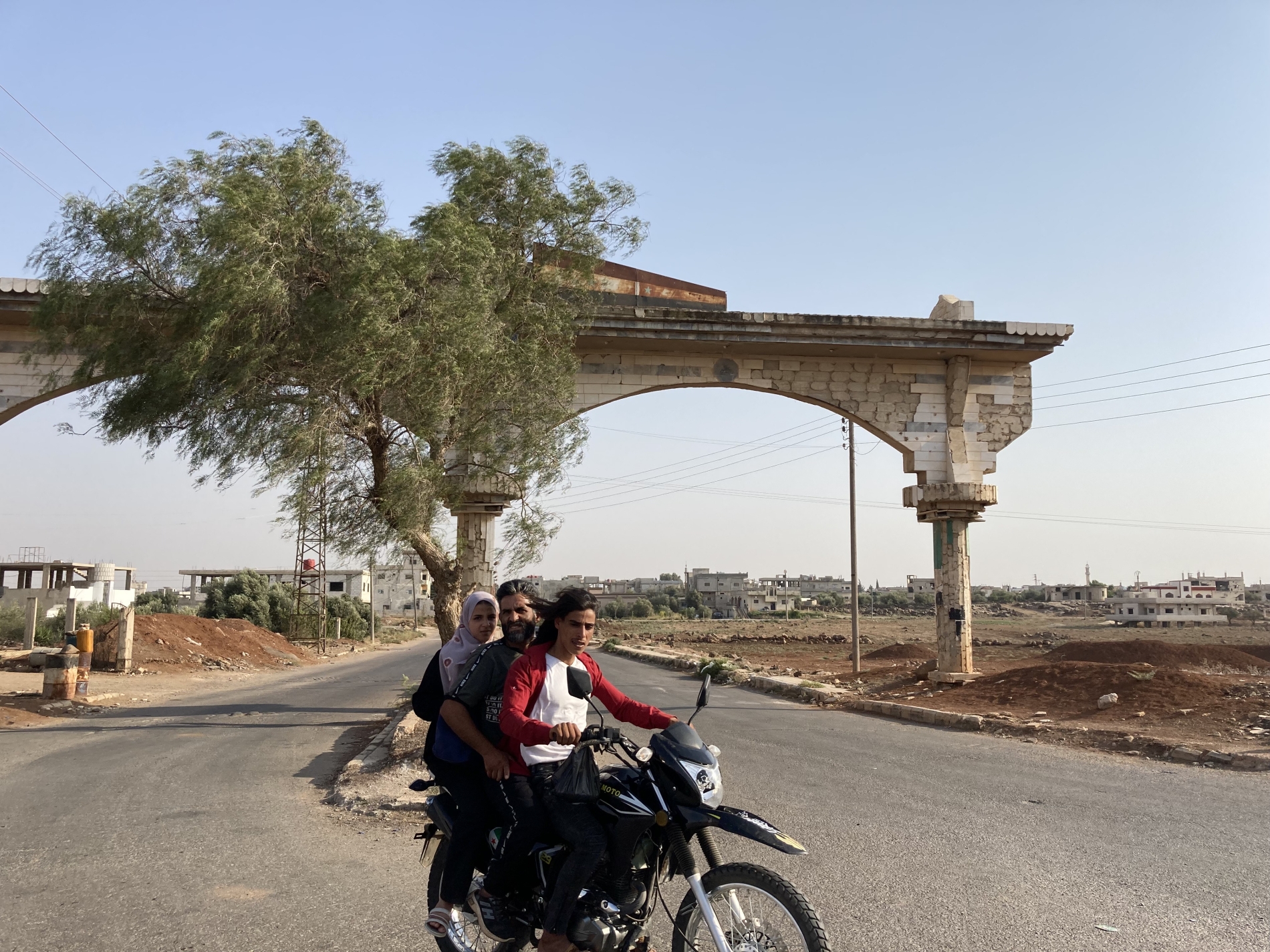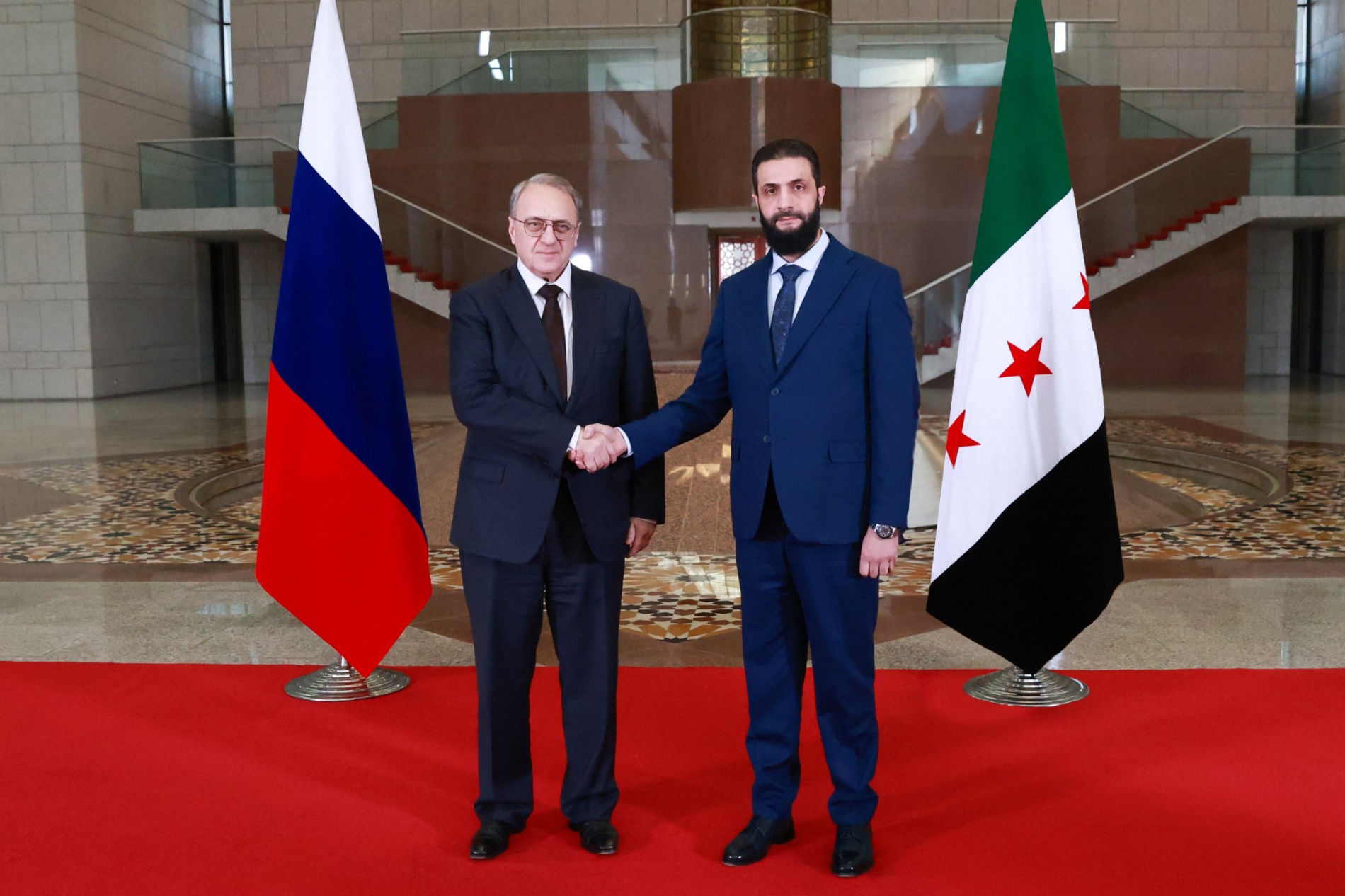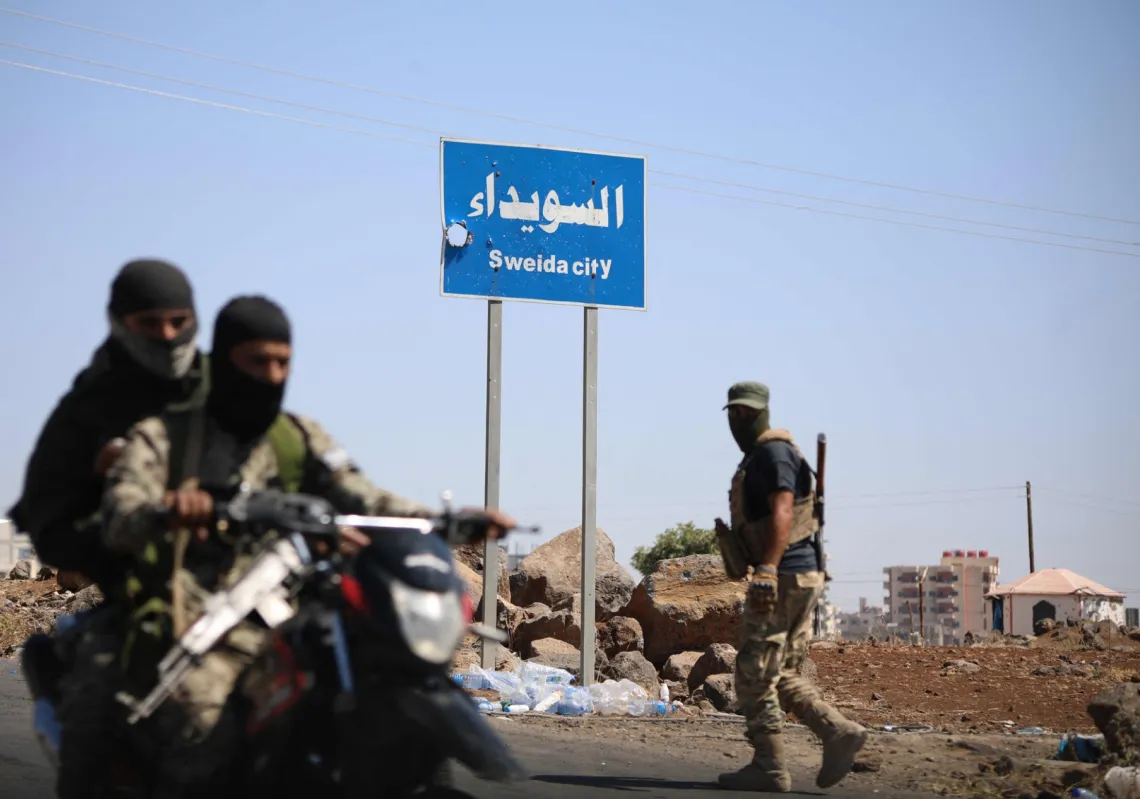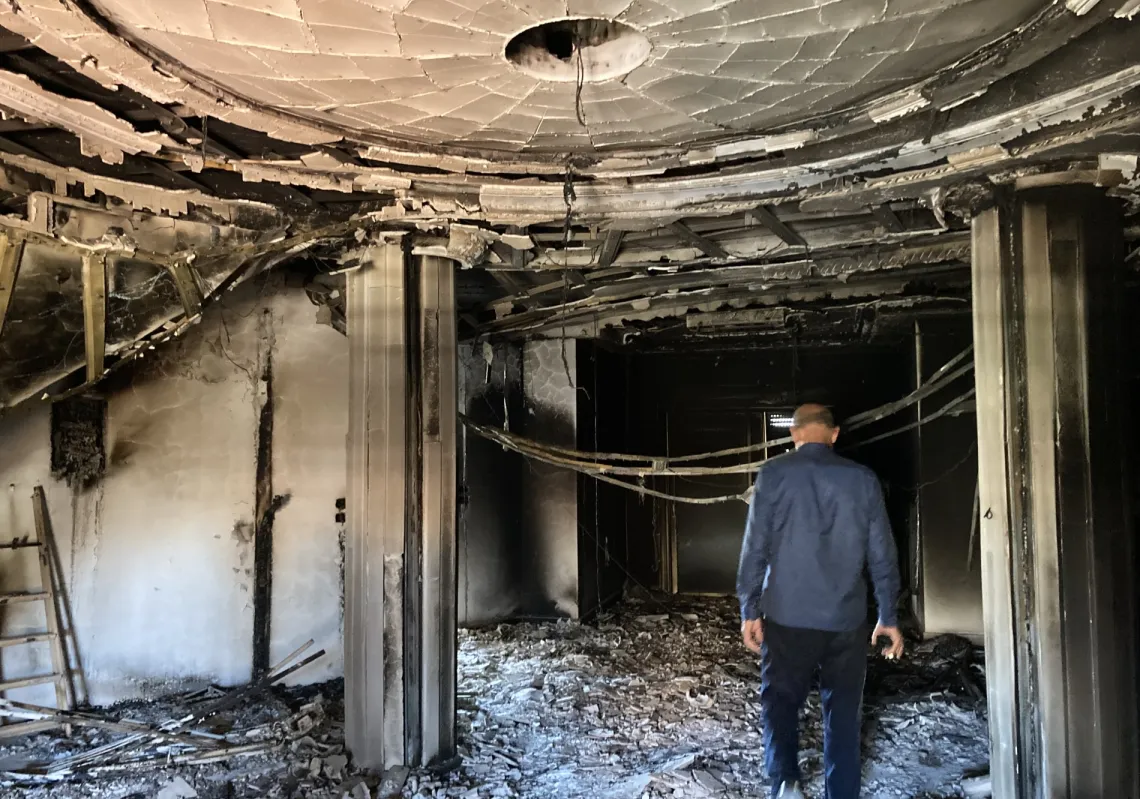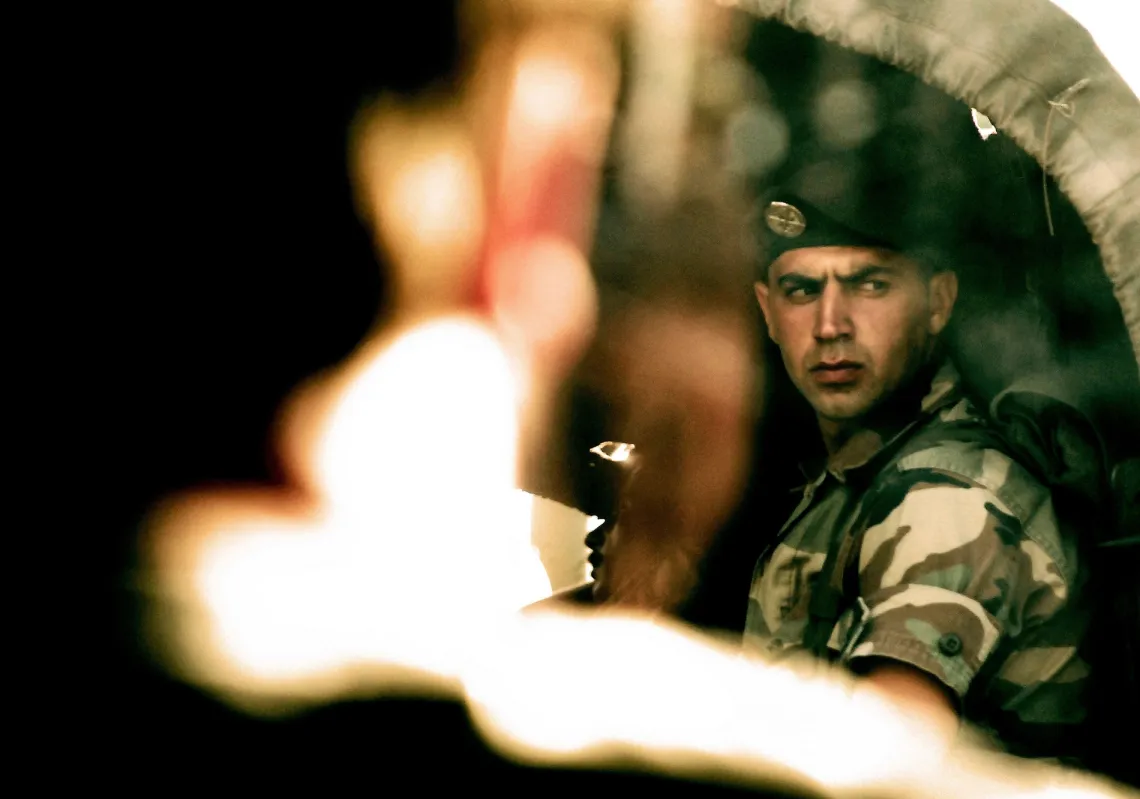Daraa: “Israel has a much larger plan than ‘protecting the Druze’ in Sweida,” the deputy governor of Syria’s Daraa governorate told Al Majalla in a visit to the regional capital.
On 26 August, the latest of many Israeli airstrikes in the southern part of the country killed six Syrian government soldiers, according to a state-run media outlet. The attack reportedly occurred in an area about 20 kilometres south of Damascus.
“Israel started bombing us on 8 December,” the deputy governor, Mohannad al-Johmani, noted during the extended interview at his office in the regional capital on 13 August. “Immediately after the fall of the former regime, Israel began to target the southern region nonstop, focusing on vital areas.”
“Sometimes it bombed us simply to frighten people,” he said. “It does not want stability in southern Syria.”
A few days before the airstrike that killed several Syrian soldiers, the Israeli military arrested three young men at dawn on 21 August from a house in the Abdeen village in the Yarmouk Basin in western Daraa on charges of weapons possession, a local official confirmed in a message to Al Majalla the next day.
The state news agency later reported that Israeli army forces had infiltrated into several areas of the Daraa and Quneitra governorates and set up checkpoints as part of the latest in a long string of arrests and encroachments into Syrian territory in recent months.
Daraa is where protests began in 2011 that sparked an uprising culminating in the ouster of the Assad regime after decades in power. On 8 December 2024, fighters from this southern region arrived in the capital prior to those from Idlib due to their proximity to it.
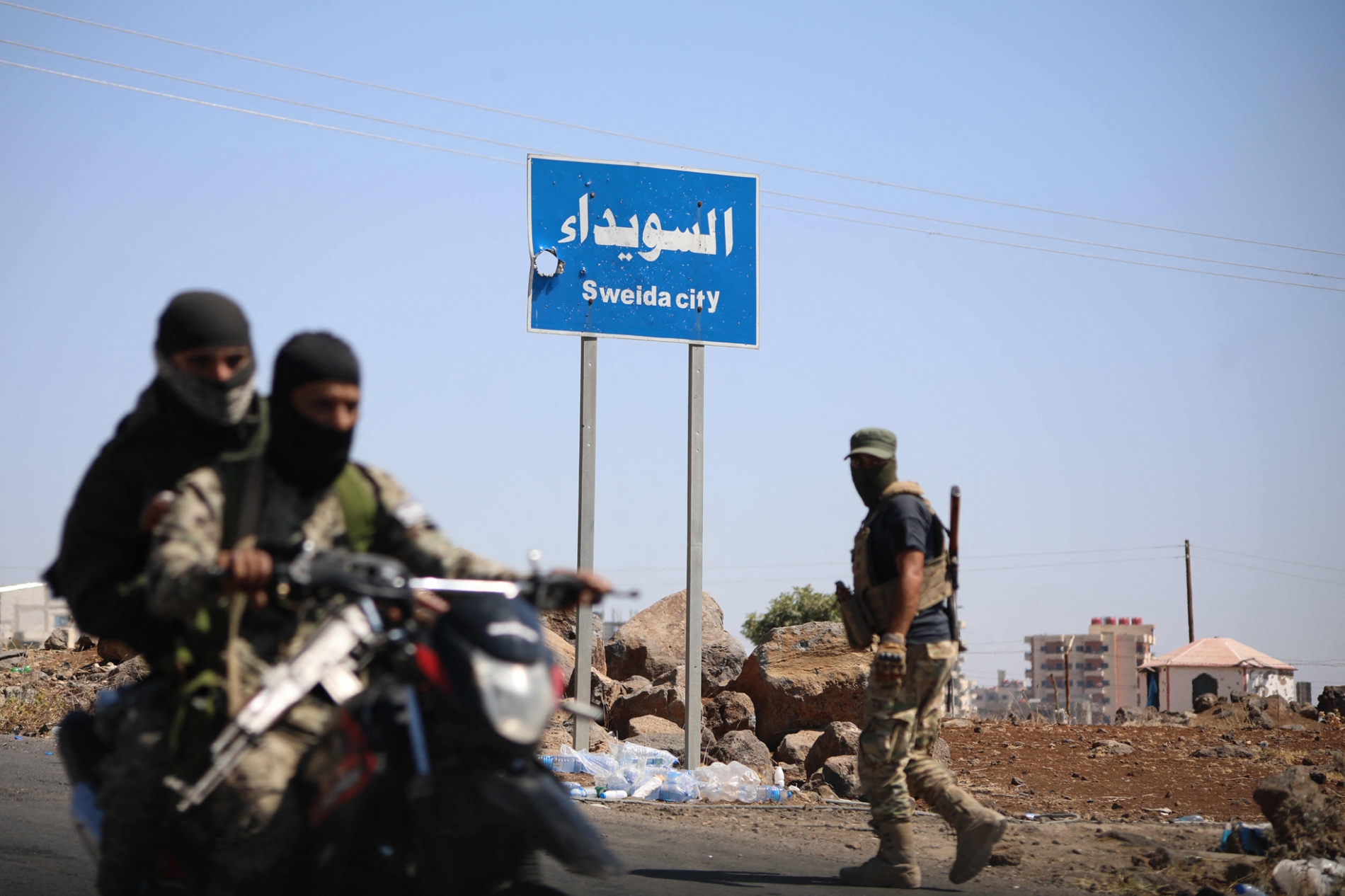
Since violence broke out in mid-July in the Druze-majority region of Sweida, which also borders Jordan but has no border crossing with it, unlike Daraa, Israel has proposed a “humanitarian corridor” for the Druze in Sweida.
Any sort of “corridor” between Israel and Sweida would presumably go through the Daraa region, the capital of which is located just over an hour away from Damascus on the main route between the latter and Jordan. The regional capital—like those of neighbouring Sweida and Quneitra, between which it is sandwiched—bears the same name as the region itself and currently holds tens of thousands of internally displaced persons from nearby Sweida, many of whom are staying in schools due to open next month.
Some of those IDPs left Sweida with nothing and claim they “cannot ever go back” as everything they had has been destroyed.
Minorities and imbalances
Syrian foreign minister Asaad al-Shaibani has for weeks been meeting with regional officials in an attempt to stabilise southern Syria and reduce any threat Israel may pose to Syria’s future and territory.
Most close observers note that, given the massive imbalance in terms of intelligence and weaponry that Israel possesses, the current Syrian government has little choice but to try to calm its neighbour down and make compromises of some sort.
“We are not seeking enemies,” al-Johmani noted. “Our mission now is to build the country and advance it for future generations.”
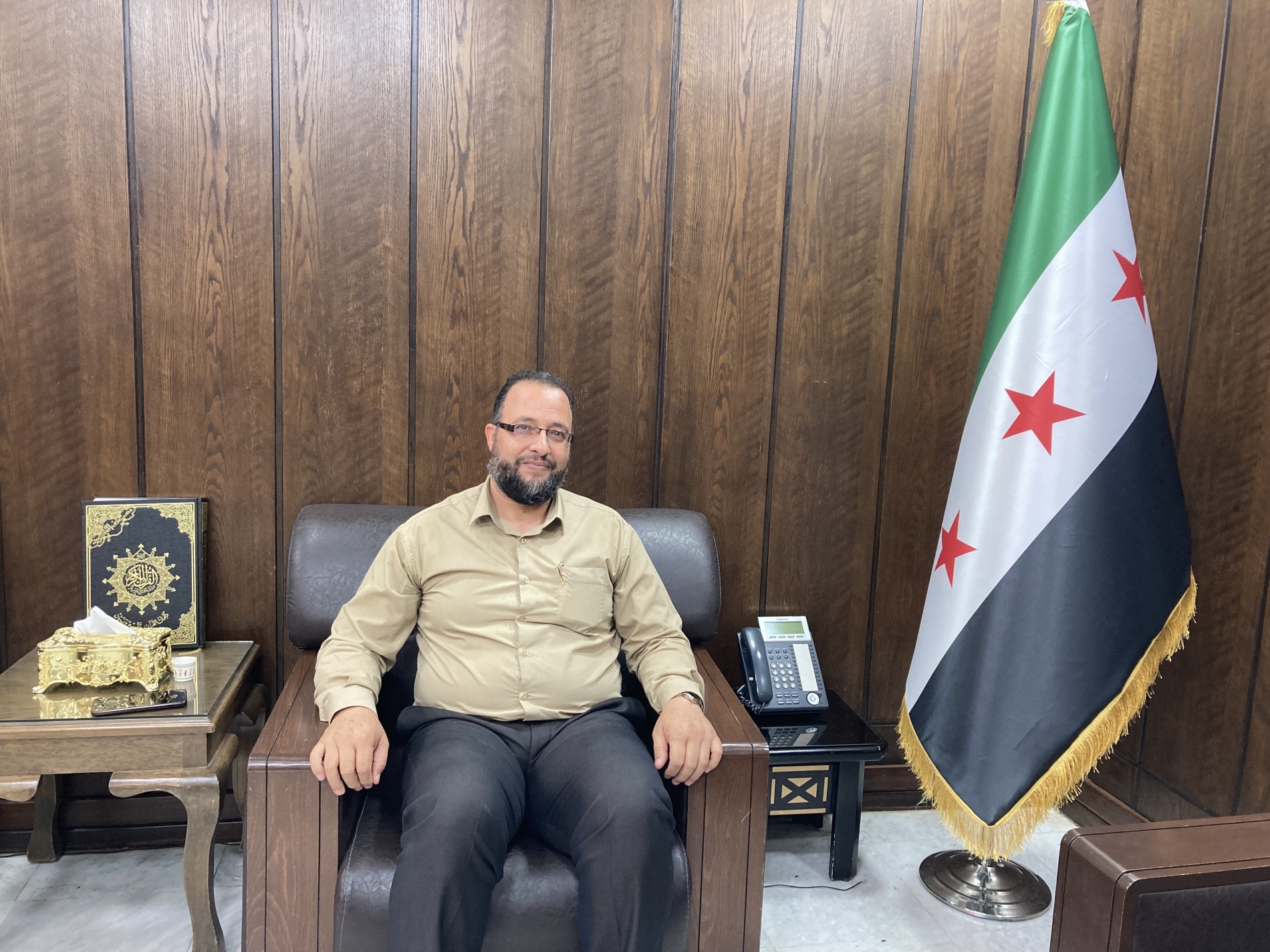
Some claim the violence in Sweida was orchestrated by Israel, including through its support for Druze cleric Hikmat Hijri, as part of a wider plan to link the governorate with territories in northeastern Syria under the Syrian Democratic Forces (SDF) and thereby weaken the central government.
“We know that outlaw gangs are responsible for the violence and bloodshed in Sweida. The people of Sweida are our people and families, and we will not abandon them. The outlaw gangs are the ones who escalated the situation,” al-Johmani told Al Majalla. “But the fact that only central government forces on the edges of Sweida were targeted by Israel (in July) and not Sweida itself raises many questions.”
On 21 August, the UN issued a statement drawing attention to “a wave of armed attacks on Syrian Druze communities in and around Sweida Governorate since 13 July 2025, with reports of killings, enforced disappearances, abductions, looting, destruction of property, and sexual and gender-based violence against women and girls.”
Attacks killed “1,000 people, including at least 539 identified Druze civilians—among them 39 women and 21 children. At least 196 people, including eight children and 30 women, were reportedly extrajudicially executed and over 33 villages burned,” the UN statement added.
Local Bedouin communities, including those displaced to the neighbouring Daraa governorate, say too little attention has been given to the human rights violations they too have experienced. Some say the fact that the Bedouin communities tend to be poorer, less educated Arabs, and are often low-paid workers for the Druze in Sweida may play a role in the lack of attention to their plight.
Multiple observers claim the UN and others have long focused on minority groups while downplaying crimes against Syria’s Arab majority. Over the course of Syria’s 14-year war, the vast majority of those killed by both Assad forces and the Islamic State (IS) were Sunni Arabs. The Druze population accounts for only an estimated 3% of the population.


